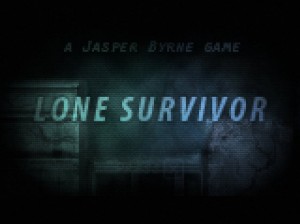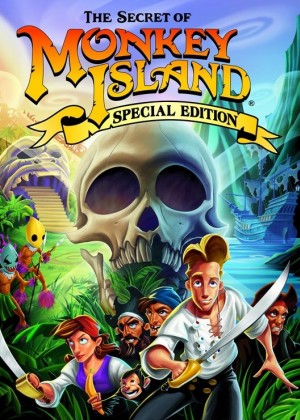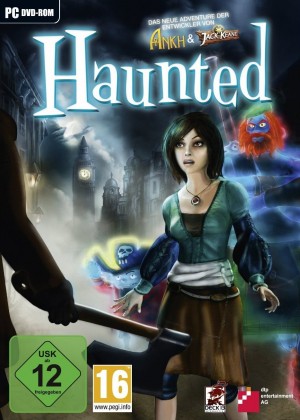A World of Little Hopes for the Genre
Since I finished my three-part “sky is kinda falling” blog series a while back, we’ve mourned a major publisher going bankrupt, witnessed the high-priced Wii and DS launch of Broken Sword Director’s Cut, and seen 432 hidden object games be released… Okay, that last one may be an exaggeration, but casual titles are out in full force these days, so between the three issues raised, I guess I wasn't too far off. Now, for the record, even I wasn’t expecting some of the changes to happen this quickly, and I still contend that the real effects of deep-rooted issues have yet to truly be felt. The games releasing now are all the tail ends of the previous “generation” of production cycles, after all. Those were all greenlit under the assumption of a still-healthy market 12 or 18 months, even two years ago. It’s the new generation I’m more worried about. Will as many games get started at all in the current climate, or be seen through to completion? I’m convinced the answer is “no” (I know of some concerning evidence already, though I’m not really at liberty to discuss details). “How many?” is the question that really remains to be seen.
But that’s the despair just getting rehashed all over again. When I first wrote those articles, it was always my intention to follow it up with a message of hope, which I tried to indicate still existed, though perhaps that particular message was drowned out previously. Unfortunately, it took until now to actually get back to the blog, so the negativity lingered a little longer than I intended. I’d joke that it took me this long just to think of any reasons for hope, but while there’s probably a bit more truth in that than I’d like, really it’s because I was sidetracked with other things. Between an overwhelming number of new previews, interviews, reviews, and of course the inaugural Aggie Awards, my time has been pretty much taken up with current site content. And really, isn’t that a symbol of hope right there? Even while discussing dark times, there’s still a steady stream of new games to deal with, and there are always some good ones to celebrate at each year end. Whatever challenges the genre faces, I expect no different when the 2009 Aggies roll around.
Maybe that’s just blind optimism, though. What legitimate hopes are there really? There are no guarantees, of course, and perhaps the answer falls something short of tangible proof, but I think it qualifies as reasoned confidence. Here’s a bit of rationale for that faith.
Global popularity
While the genre always seems to be teetering on the brink of disinterest in major English language markets, it actually seems to be picking up steam in some parts of the world. Germany and France have long been leaders in this regard, but now that influence seems to be spreading out even farther. The Nintendo DS has made Japan a significant player on the worldwide adventure stage, and new game announcements seem to be coming from everywhere: in recent months alone, a whopping FOUR games from Italy, one from Malaysia, another from Israel, plus plenty more already in development throughout eastern Europe.
Now, these (mainly) independent development teams will face all the same challenges of any fledgling company in a niche business, so it’s unlikely the games will all come to fruition. But the encouraging part is simply the interest itself. If more games are being made worldwide, it simply stands to reason that more of them will succeed. That still leaves the not-so-minor issue of localization if they’re ever to benefit us, but the first goal is to have games to localize, and with enough developers in enough countries trying, some are bound to see their way clear. Our English language markets may be the genre slackers that rely on the efforts of other nations, but hey, so long as someone’s taking the lead, there’s something positive to follow.
UK publishing strength
When discussing the plight of North American publishers early in this series, I mentioned that the strength of the UK publishing market wasn’t strong enough to support the (English language) genre on its own. And while I still contend that’s true in the long run, I’ve been surprised and duly impressed by what I’ve seen out of Britain in recent months. Kalypso Media has really stepped to the plate with Ceville and the upcoming Gobliiins 4, while Ascaron continues its solid contribution with the likes of Sherlock Holmes and Fenimore Fillmore’s Revenge. It’s not a lot, but it’s encouraging nonetheless. By no means is it a good thing that North American publishers are disappearing, but it does force one’s attention to alternatives, and maybe the UK will play a bigger role in a new, more Euro-centric adventure landscape.
Digital distribution
I already touched on this in one of the earlier blogs, so I won’t discuss it in detail again. I’ll just say that its time has apparently come. Not “on the horizon”, not “slowly building momentum”. It’s arrived, with not one, not two, but FIVE games released exclusively through digital distribution since the last blog entry. Gamers may embrace it only reluctantly for a while yet, but if one wants the likes of Emerald City Confidential, The Legend of Crystal Valley, and Ankh 3 today, it’s download or bust… Or perhaps waiting many long months in the hopes of a boxed release – a release, which, if it ever comes at all, will come only on the shoulders of its downloadable success. We’re only at the very beginning of the digital future, but the future is apparently now, whether we like it or not. Not all publishers are on board yet, but the short-sighted holdouts are getting fewer and farther between.
De-saturating the genre
This may sound like a backwards step – and it is – but hear me out. While it’s long since stopped being a mainstream market force with AAA-headliner titles, the adventure genre has nevertheless seen relatively good times in recent years. As AG staff veterans will attest, it was once a struggle even to find ten worthwhile names just to fill up the Hype-o-Meter. For the last several years, it’s been a question of which games to leave off. In other words, though clearly not the genre heyday of old, there have been lots of interesting adventures of late.
So far so good.
More games mean more potential sales, of course. And there’s nothing that piques a publisher's interest like more sales, so more publishers began getting involved. Then more developers saw opportunity, and so more games were announced. Gamers just lapped it all up as good news, and for a while there it was. But, just like all unrealistic expectations of unending growth inevitably collapse, so the genre hit its ceiling somewhere along the way. See, more games didn’t mean more gamERS. Or at least, not nearly as many as would be required to sustain that kind of ongoing expansion. At some point, then, the same niche market became over-saturated with adventures. I’m pulling simple numbers out of a hat for example, but where once only two adventure games were released, a fan could afford to buy both. When three were released, they could still afford two. When five were released, they still bought two, and three went unpurchased. And those three unpurchased meant trouble for their companies. And since gamers made different choices of their two, it meant shared trouble for every company. It’s basic math: when there’s less money to go around than there are products requiring it, some or even all of those products are destined to fail.
I don’t know when exactly we hit that point, but hit it we did. There are no reliable sales figures for games (and even if there were, those would tell only a small part of the story), but enough adventure companies have indicated (to me, unofficially) the financial challenges to know that they weren’t alone in feeling the pinch. Lighthouse is only the most extreme example (so far, but let’s hope it doesn’t spread much beyond that). Sure, the failure of their UK distribution partner (uh oh, there’s that problem back again) and the troubles of their parent company were the final nails in the company coffin, but they weren’t bought out in the first place because they were thriving, but struggling fiscally. Underselling products will do that.
I know, I know, this sounds like the downer stuff all over again, but the point is, it was time to scale back anyway. As much as ideally the thought of more games, more selection is better all around, the reality is that we’re all better off with fewer games better made. And hopefully that’s one of the secondary benefits of the obstacles facing the genre today. Instead of flooding the market with so many games that few can succeed, perhaps fewer games will mean all can succeed. The challenge, of course, is to ensure that it’s the BETTER games that get picked up and endorsed, but for that we’ll just need to hope that current developers continue to hone their craft and publishers show they’re brighter than they act sometimes.
There are other reasons for hope beyond these points, some of which have been mentioned previously. The casual market could yet broaden the adventure game fanbase, while indies will continue to provide a solid contribution that isn’t so dependent on fluctuating market forces. And who knows, the belt-tightening for other publishers might just make lower risk (albeit lower payoff) investments like adventure games worth a closer look in future. Wishful thinking? Sure. Impossible? Definitely not.
I realize that none of these reasons amounts to anything more than a silver lining in a dark cloud, but that’s the reality we face, and isn’t that better than grumbling about the lousy weather?
This article originally appeared in Adventure Gamers' now-defunct blog.













